Country
Operator Image

Crash of a Cessna 207 Skywagon near Bethel: 1 killed
Date & Time:
May 30, 2015 at 1130 LT
Registration:
N1653U
Survivors:
No
Schedule:
Bethel - Bethel
MSN:
207-0253
YOM:
1974
Crew on board:
1
Crew fatalities:
Pax on board:
0
Pax fatalities:
Other fatalities:
Total fatalities:
1
Captain / Total hours on type:
6600.00
Aircraft flight hours:
28211
Circumstances:
The pilot departed on a postmaintenance test flight during day visual meteorological conditions. According to the operator, the purpose of the flight was to break in six recently installed engine cylinders, and the flight was expected to last 3.5 hours. Recorded automatic dependent surveillance-broadcast data showed that the airplane was operating at altitudes of less than 500 ft mean sea level for the majority of the flight. The data ended about 3 hours after takeoff with the airplane located about 23 miles from the accident site. There were no witnesses to the accident, which occurred in a remote area. When the airplane did not return, the operator reported to the Federal Aviation Administration that the airplane was overdue. Searchers subsequently discovered the fragmented wreckage submerged in a swift moving river, about 40 miles southeast of the departure/destination airport. Postmortem toxicology tests identified 21% carboxyhemoglobin (carbon monoxide) in the pilot's blood. The pilot was a nonsmoker, and nonsmokers normally have no more than 3% carboxyhemoglobin. There was no evidence of postimpact fire; therefore, it is likely that the pilot's elevated carboxyhemoglobin level was from acute exposure to carbon monoxide during the 3 hours of flight time before the accident. As the pilot did not notify air traffic control or the operator's home base of any problems during the flight, it is unlikely that he was aware that there was carbon monoxide present. Early symptoms of carbon monoxide exposure may include headache, malaise, nausea, and dizziness. Carboxyhemoglobin levels between 10% and 20% can result in confusion, impaired judgment, and difficulty concentrating. While it is not possible to determine the exact symptoms the pilot experienced, it is likely that the pilot had symptoms that may have been distracting as well as some degree of impairment in his judgment and concentration. Given the low altitudes at which he was operating the airplane, he had little margin for error. Thus, it is likely that the carbon monoxide exposure adversely affected the pilot's performance and contributed to his failure to maintain clearance from the terrain. According to the operator, the airplane had a "winter heat kit" installed, which modified the airplane's original cabin heat system. The modification incorporated an additional exhaust/heat shroud system designed to provide increased cabin heat during wintertime operations. Review of maintenance records revealed that the modification had not been installed in accordance with Federal Aviation Administration field approval procedures. Examination of the recovered wreckage did not reveal evidence of any preexisting mechanical anomalies that would have precluded normal operation of the airplane. Examination of the airplane's right side exhaust/heat exchanger did not reveal any leaks or fractures that would have led to carbon monoxide in the cabin. Because the left side exhaust/heat exchanger was
not recovered, it was not possible to determine whether it was the source of the carbon monoxide.
not recovered, it was not possible to determine whether it was the source of the carbon monoxide.
Probable cause:
The pilot's failure to maintain altitude, which resulted in collision with the terrain. Contributing to the accident was the pilot's impairment from carbon monoxide exposure in flight. The source of the carbon monoxide could not be determined because the wreckage could not be completely recovered.
Final Report:
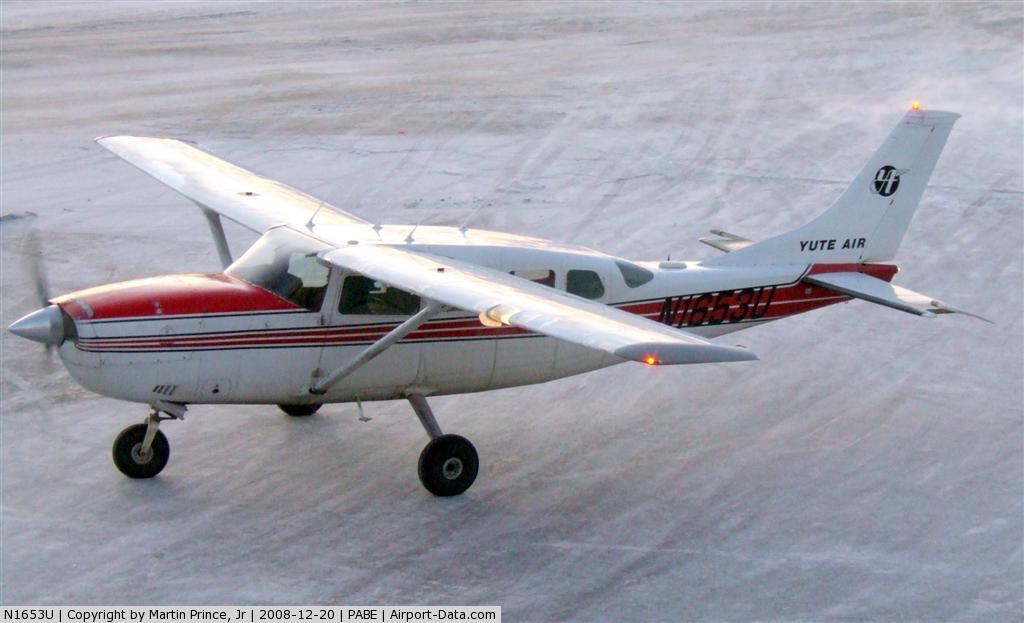
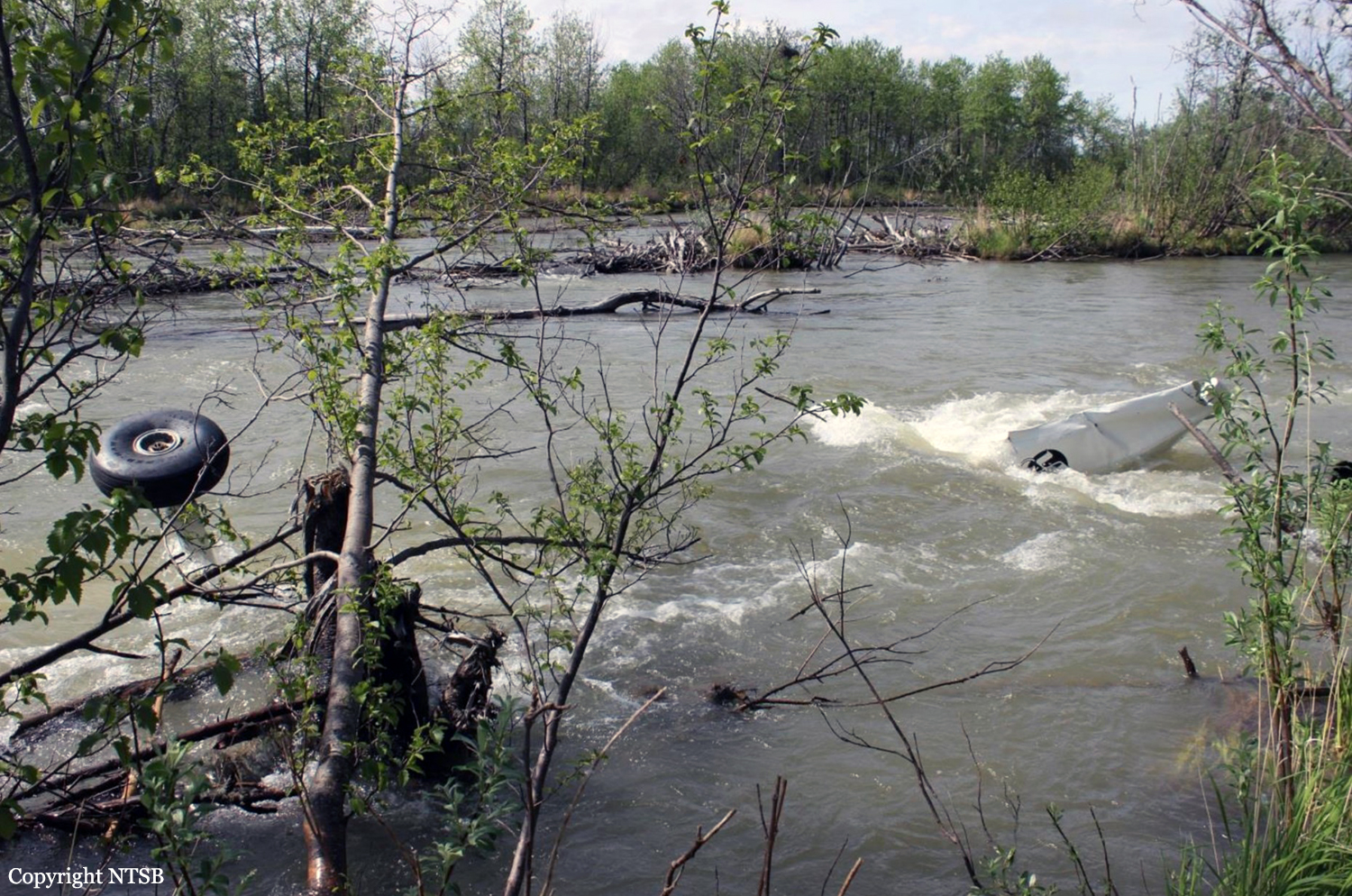
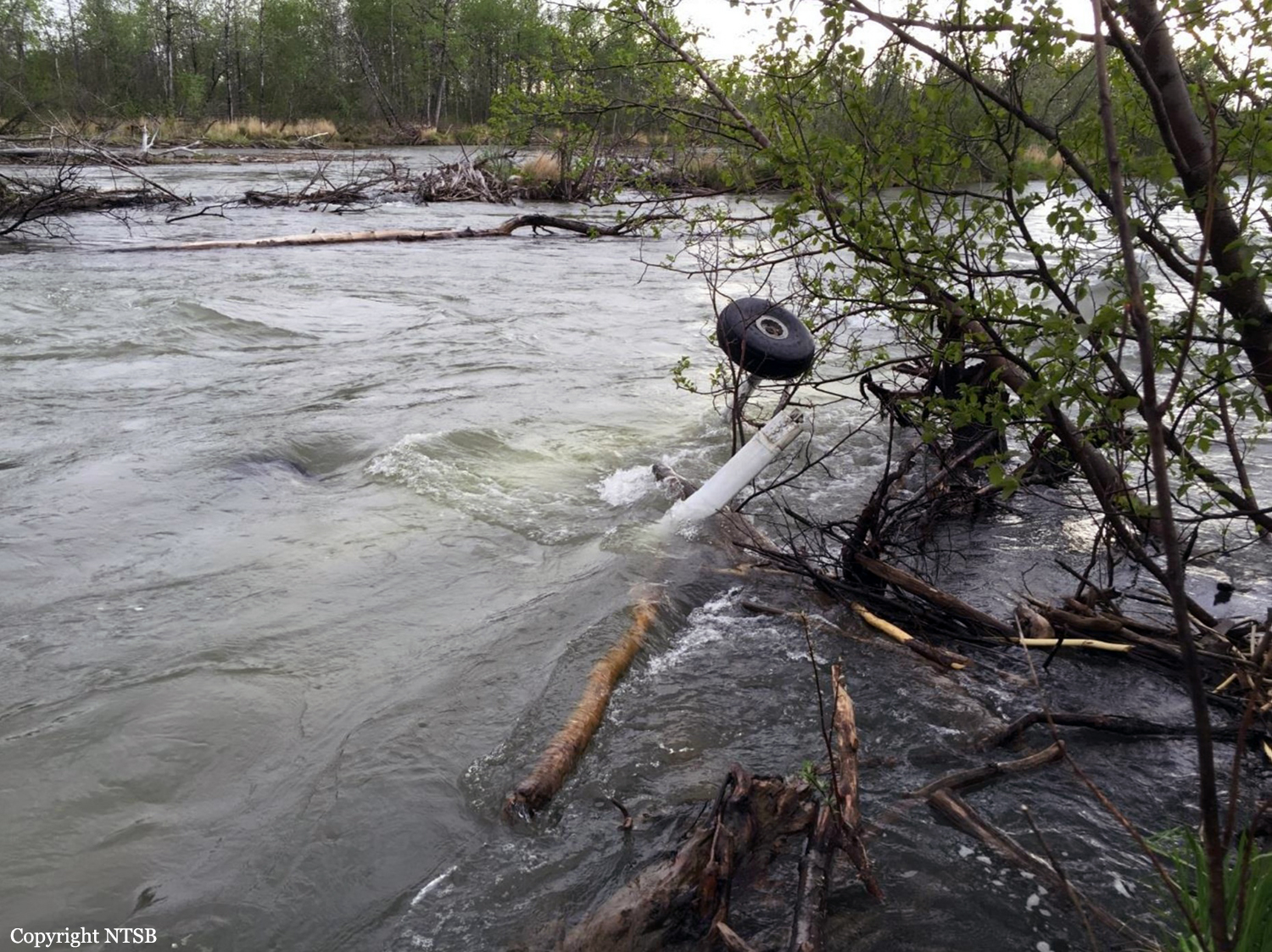
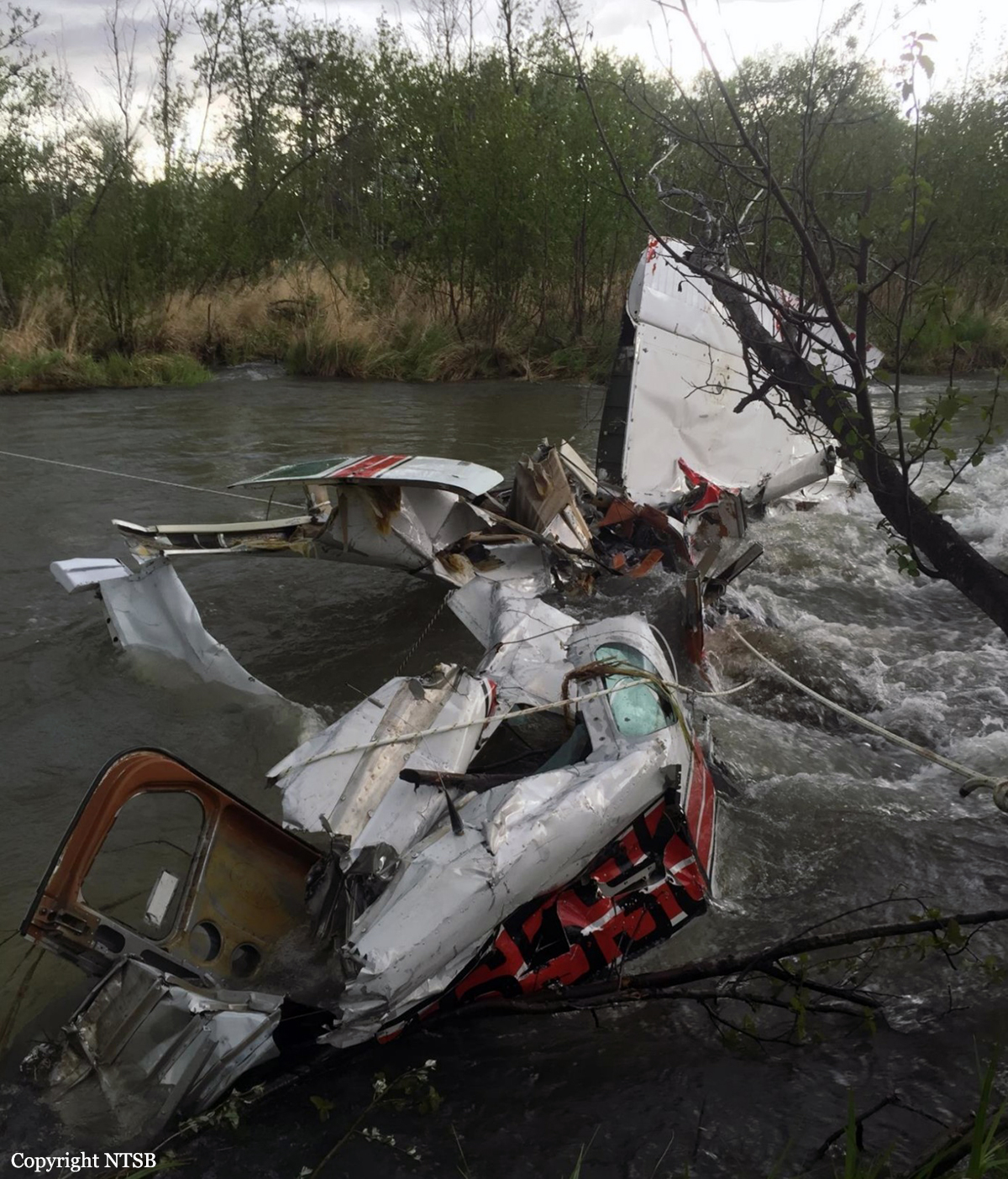
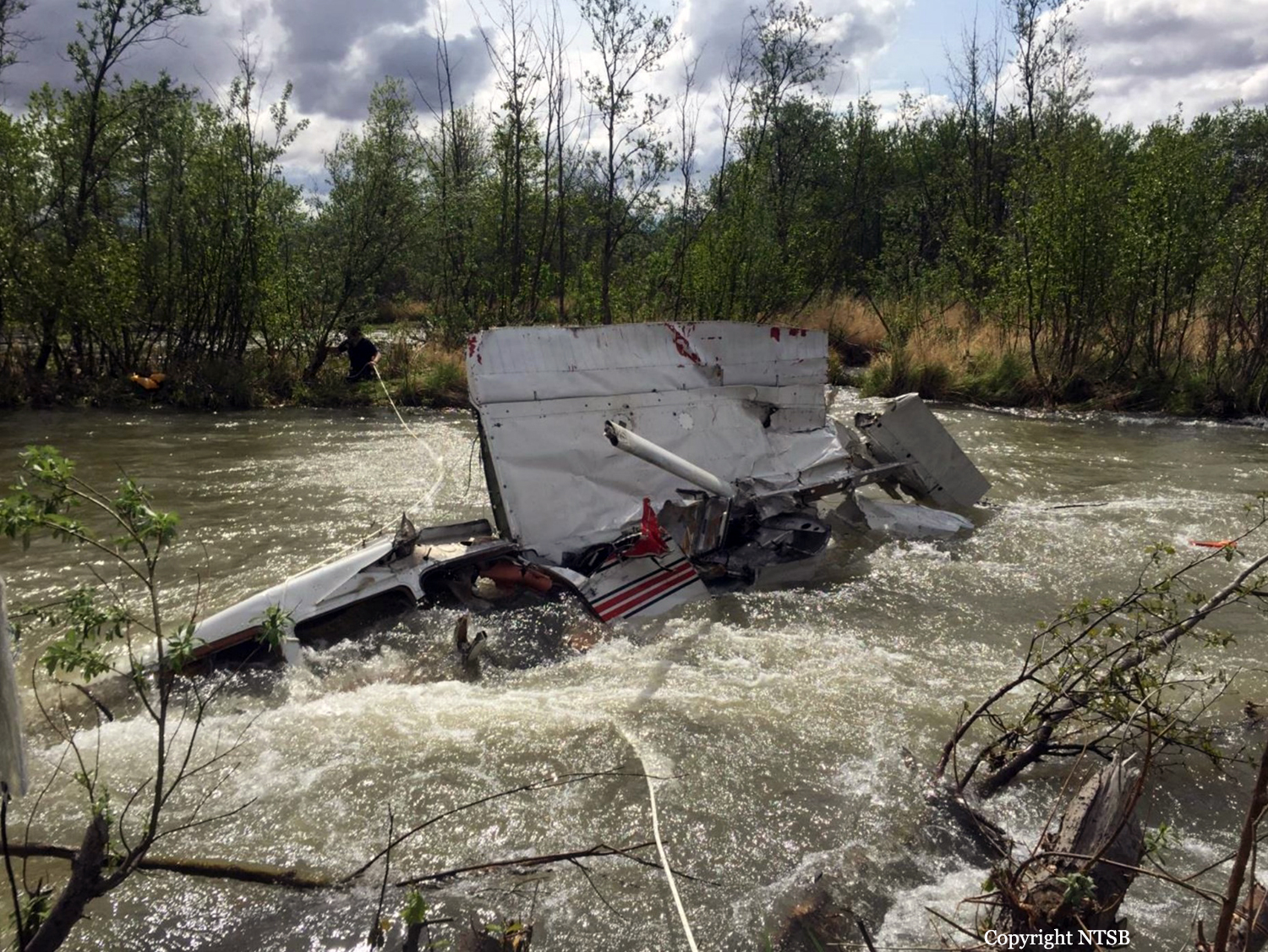
Crash of a Cessna 207 Skywagon in Tuntutuliak
Date & Time:
Oct 13, 2006 at 1512 LT
Registration:
N7336U
Survivors:
Yes
Schedule:
Bethel - Tuntutuliak
MSN:
207-0405
YOM:
1977
Crew on board:
1
Crew fatalities:
Pax on board:
0
Pax fatalities:
Other fatalities:
Total fatalities:
0
Captain / Total hours on type:
1000.00
Aircraft flight hours:
21781
Circumstances:
The commercial certificated pilot was attempting to land on a remote runway during a Title 14, CFR Part 135, cargo flight. The approach end of the runway is located at the edge of a river. During the pilot's fourth attempt to land, the airplane collided with the river embankment, and sustained structural damage. The director of operations for the operator reported that he interviewed several witnesses to the accident. They told him that the weather conditions in the area had been good VFR, but as the pilot was attempting to land, rain and mist moved over the area, reducing the visibility to about 1/4 mile. Within 30 minutes of the accident, the weather conditions were once again VFR. The pilot told an FAA inspector that the weather conditions consisted of a 500 foot ceiling and 2 miles of visibility. The pilot reported that he made 3 passes over the runway before attempting to land. On the last landing approach, while maintaining 80 knots airspeed, the pilot said the nose of the airplane dropped, he applied full power and tried to raise the nose, but the airplane collided with the river bank.
Probable cause:
The pilot's misjudgment of distance/altitude during the landing approach, which resulted in an undershoot and in-flight collision with a river embankment. Factors contributing to the accident were reduced visibility due to rain and mist.
Final Report:
Crash of a Cessna 207A Skywagon in Manokotak
Date & Time:
Dec 17, 1998 at 1740 LT
Registration:
N1764U
Survivors:
Yes
Schedule:
Dillingham – Togiak – Manokotak – Togiak – Dillingham
MSN:
207-0364
YOM:
1976
Flight number:
UYA611
Crew on board:
1
Crew fatalities:
Pax on board:
1
Pax fatalities:
Other fatalities:
Total fatalities:
0
Captain / Total hours on type:
700.00
Aircraft flight hours:
7283
Circumstances:
The certificated commercial pilot and the pilot-rated, nonrevenue passenger, departed at night from a remote village airport on the last leg of a VFR scheduled air taxi flight. The destination airport was 17 nautical miles northeast of the departure point. After departure, the pilot said he encountered severe turbulence and entered a snow squall where the visibility dropped below 1 mile. The pilot said he was in instrument meteorological conditions, and a strong surface wind was blowing the airplane toward the southwest. He began correcting his course toward the southeast, and then collided with a snow-covered hill. The passenger said that light snow showers were falling in the area, along with turbulence and strong winds from the northeast. After departing on the accident flight, snow showers intensified, and the pilot turned toward the south, away from the intended destination. About 10 minutes after takeoff, the passenger inquired about the direction of flight, and the pilot said he was going to head to the coast and follow it to the destination. The visibility was about 1 mile. No ground features were visible until the passenger saw snow-covered terrain about 3 feet below the airplane. The airplane then collided with terrain. The pilot indicated he obtained a weather briefing from an FAA Flight Service Station.
Probable cause:
The pilot's continued VFR flight into instrument meteorological conditions. Factors in the accident were dark night conditions, snow covered terrain, and low ceilings.
Final Report:
Crash of a Cessna 207A Skywagon neat Twin Hills: 1 killed
Date & Time:
Sep 26, 1997 at 1306 LT
Registration:
N9984M
Survivors:
No
Schedule:
Manokotak - Togiak
MSN:
207-0774
YOM:
1984
Crew on board:
1
Crew fatalities:
Pax on board:
0
Pax fatalities:
Other fatalities:
Total fatalities:
1
Captain / Total hours on type:
1000.00
Aircraft flight hours:
14089
Circumstances:
The flight departed with 180 pounds of cargo after deplaning a passenger. Three company pilots overheard the accident pilot report that he was 13 minutes from his destination. The overdue aircraft was located by company airplanes about 700 feet MSL, on the east (downwind) side of an 890 feet msl pass. The airplane impacted on a 330 degree heading and perpendicular to the axis of the canyon/pass (oriented east-west), in a flat attitude, with no ground scars leading to the wreckage. No anomalies were found with the airplane, and all blades on the propeller exhibited torsional twisting and leading edge gouging. A westerly wind of seven to nine knots existed and numerous pilots reported the mountain passes were not obscured by clouds. Photographs from the pilot's camera depicted views of the accident canyon, with the pass and accident site above the altitude from which the photographs were taken. These photographs contained the date of the accident. Numerous depressant and stimulant, over-the-counter cold and asthma medications were found in the pilot's flight bag. Toxicological tests detected several over-the counter medications used for cold and asthma symptoms with illness effect of distraction or sensory disturbance. As a result of the condition for which the drugs were ingested may have also played a role in the accident.
Probable cause:
Improper in-flight planning/decision by the pilot, and his failure to maintain sufficient altitude over mountainous terrain. Factors related to the accident were downdraft conditions, mountainous/hilly terrain, and the use of over-the-counter medications.
Final Report:
Crash of a Cessna 207 Skywagon in Kotzebue
Date & Time:
Apr 17, 1996 at 1253 LT
Registration:
N6282H
Survivors:
Yes
Schedule:
Kotzebue - Selawik
MSN:
207-0465
YOM:
1978
Crew on board:
1
Crew fatalities:
Pax on board:
0
Pax fatalities:
Other fatalities:
Total fatalities:
0
Captain / Total hours on type:
175.00
Aircraft flight hours:
15367
Circumstances:
The pilot was departing a remote airport to begin a VFR cargo flight. The departure path took the airplane over ice covered terrain. The airport was considered to be below basic VFR conditions with light snow and fog, and the visual conditions in the area were considered to be 'flat' with the visibility from 2 to 3 miles. The pilot received a special VFR clearance out of the control zone by a flight service station specialist. After departure, witnesses observed the airplane climb to an estimated 500 feet above the ground and turn to the right. Shortly thereafter, the airplane banked to the right about 90 degrees, then descended to the ground in a wing and nose low attitude. A postaccident inspection of the airframe and engine did not reveal any mechanical malfunction.
Probable cause:
Failure of the pilot to maintain sufficient altitude/clearance above terrain, after becoming spatially disoriented, while maneuvering after takeoff. Factors relating to the accident were: fog, snow, partial obscuration, 'flat' conditions of light, and the lack of a distinct horizon over ice/snow covered terrain.
Final Report:
Crash of a Cessna 207A Skywagon in Bethel
Date & Time:
Mar 20, 1995 at 1155 LT
Registration:
N1719U
Survivors:
Yes
Schedule:
Bethel - Kalskag
MSN:
207-0319
YOM:
1976
Crew on board:
1
Crew fatalities:
Pax on board:
1
Pax fatalities:
Other fatalities:
Total fatalities:
0
Captain / Total hours on type:
158.00
Aircraft flight hours:
11868
Circumstances:
After receiving a special VFR (SVFR) clearance, the pilot departed the airport with a passenger on a scheduled commuter flight to a remote airport. About 14 miles north of the airport, at 1,000 feet mean sea level (msl), the pilot encountered whiteout conditions and reversed course, descending to about 500 feet msl. The pilot requested a SVFR arrival back to the departure airport and began maneuvering to intercept the inbound course. While in instrument meteorological conditions, the airplane descended and collided with flat, snow covered terrain about 5 mile north of the airport. The pilot was unable to distinguish any terrain features until impact with the ground.
Probable cause:
The pilot's continued VFR flight into imc conditions and a failure to maintain altitude. A factor in the accident was 'whiteout' weather conditions.
Final Report:
Crash of a Cessna 207A Skywagon near Kotzebue: 1 killed
Date & Time:
Feb 25, 1995 at 1250 LT
Registration:
N6479H
Survivors:
No
Schedule:
Kotzebue - Kivalina
MSN:
207-0539
YOM:
1979
Flight number:
UYA1907
Crew on board:
1
Crew fatalities:
Pax on board:
0
Pax fatalities:
Other fatalities:
Total fatalities:
1
Captain / Total hours on type:
333.00
Aircraft flight hours:
8434
Circumstances:
Approximately 10 minutes after departure, the pilot was contacted by a company pilot flying in the opposite direction. During their conversation the pilot stated that he was 'looking for wolves.' Shortly thereafter, the company pilot told the pilot that his radio transmissions were breaking up. The pilot replied that it was probably because he was 'behind a ridge.' The company pilot temporarily went off frequency; however, when he switched back he was unable to contact the pilot. The aircraft was later located on the southwest side of a box canyon about 100 feet below the top of the ridge. The normal course line for the route typically flown by company pilots is 6 miles away. The pilot had no prior experience in mountain flying.
Probable cause:
The pilot's decision to enter a box canyon area at an altitude inadequate to maintain terrain clearance. The pilot's lack of mountain flying experience was a factor in this accident.
Final Report:
Crash of a Piper PA-31-350 Navajo Chieftain near Nightmute: 1 killed
Date & Time:
May 7, 1987 at 1415 LT
Registration:
N54265
Survivors:
No
Schedule:
Bethel - Nightmute
MSN:
31-7405213
YOM:
1974
Crew on board:
1
Crew fatalities:
Pax on board:
0
Pax fatalities:
Other fatalities:
Total fatalities:
1
Captain / Total hours on type:
20.00
Aircraft flight hours:
3750
Circumstances:
The aircraft was destroyed when the aircraft struck a 350 foot high hill along its route. This flight was a part 135 on-demand air taxi cargo flight. Several other air taxi operators and company aircraft elected to cancel their flights. Both ground reports and pilot reports stated the weather in the area of the accident was ceilings below 500 feet and visibility less than one mile. The pilot, sole on board, was killed.
Probable cause:
Occurrence #1: in flight encounter with weather
Phase of operation: cruise - normal
Findings
1. (c) in-flight planning/decision - improper - pilot in command
2. (c) vfr flight into imc - intentional - pilot in command
3. (c) weather condition - fog
4. (c) weather condition - low ceiling
5. (c) weather evaluation - misjudged - pilot in command
----------
Occurrence #2: in flight collision with terrain/water
Phase of operation: maneuvering
Phase of operation: cruise - normal
Findings
1. (c) in-flight planning/decision - improper - pilot in command
2. (c) vfr flight into imc - intentional - pilot in command
3. (c) weather condition - fog
4. (c) weather condition - low ceiling
5. (c) weather evaluation - misjudged - pilot in command
----------
Occurrence #2: in flight collision with terrain/water
Phase of operation: maneuvering
Final Report:
Crash of a De Havilland DHC-3 Otter near Togiak: 2 killed
Date & Time:
Aug 3, 1980 at 1615 LT
Registration:
N433GR
Survivors:
Yes
Schedule:
Togiak – Dillingham
MSN:
291
YOM:
1959
Crew on board:
1
Crew fatalities:
Pax on board:
8
Pax fatalities:
Other fatalities:
Total fatalities:
2
Captain / Total hours on type:
300.00
Circumstances:
Few minutes after takeoff from Togiak while on a taxi flight to Dillingham, the pilot encountered foggy conditions in a valley. He attempted to make a climb turn when the airplane struck the slope of a mountain. The pilot and a passenger were killed while seven other occupants were injured. The aircraft was totally destroyed.
Probable cause:
Controlled collision with ground in normal cruise after the pilot continued VFR flight into adverse weather conditions. The following contributing factors were reported:
- Low ceiling,
- Fog.
- Low ceiling,
- Fog.
Final Report:
